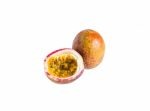In the genus Drosophila, which includes fruit flies, certain species produce and respond to a class of pheromones known as “fruity smell” aggregation pheromones. These pheromones play a crucial role in social behavior and communication among these small insects.
Fruit flies are known for their attraction to fermenting fruits, which serve as their primary food source. The fruity smell aggregation pheromones are chemical compounds emitted by male fruit flies that serve as an attractant for both males and females. These pheromones are released by mature males to mark feeding and breeding sites, signaling the presence of suitable resources and attracting other fruit flies to gather in aggregations.
The exact chemical composition of the fruity smell aggregation pheromones can vary among Drosophila species, but they often consist of volatile organic compounds (VOCs) that contribute to the characteristic fruity odor. These compounds may include esters, aldehydes, and alcohols, which are common components of fruit fragrances. Examples of specific compounds found in Drosophila pheromones include ethyl acetate, isoamyl acetate, ethyl butyrate, and others.
When a male fruit fly detects these pheromones, it recognizes them as a signal indicating the presence of potential mates and abundant food resources. Males are attracted to the aggregation sites and join other males and females in feeding and mating activities. The aggregation behavior provides advantages such as increased access to potential mates, protection from predators, and efficient exploitation of food resources.
Notably, the response to fruity smell aggregation pheromones is not limited to conspecific fruit flies. Other species, including parasitic wasps and fungi, have evolved to exploit the aggregation behavior of Drosophila by using the pheromones as cues to locate hosts or food sources. For instance, certain parasitic wasps are attracted to the aggregation sites to lay their eggs on the fruit fly larvae, providing a suitable environment for their own offspring.
Studies on the fruity smell aggregation pheromones in Drosophila have provided valuable insights into the chemical ecology, behavior, and evolutionary relationships of these insects. The identification and characterization of specific pheromone components have contributed to our understanding of the chemical communication systems in fruit flies and the intricate interplay between their social behavior and ecological interactions.
So there we have it, fruity smell aggregation pheromones in the genus Drosophila are chemical compounds emitted by male fruit flies to attract both males and females to feeding and breeding sites. These pheromones consist of volatile organic compounds that produce a characteristic fruity odor, signaling the presence of suitable resources. The aggregation behavior facilitated by these pheromones plays a vital role in social interactions and the exploitation of food resources among fruit flies.


Leave a Reply